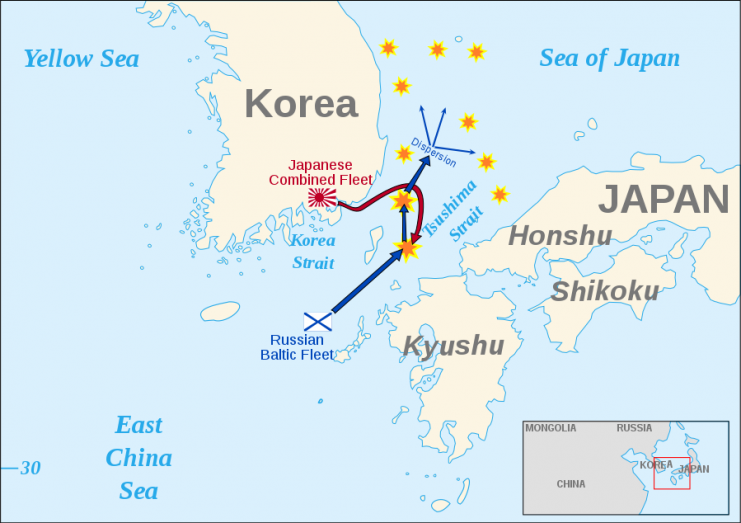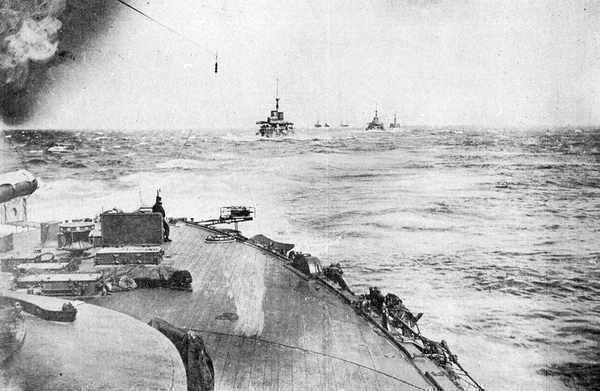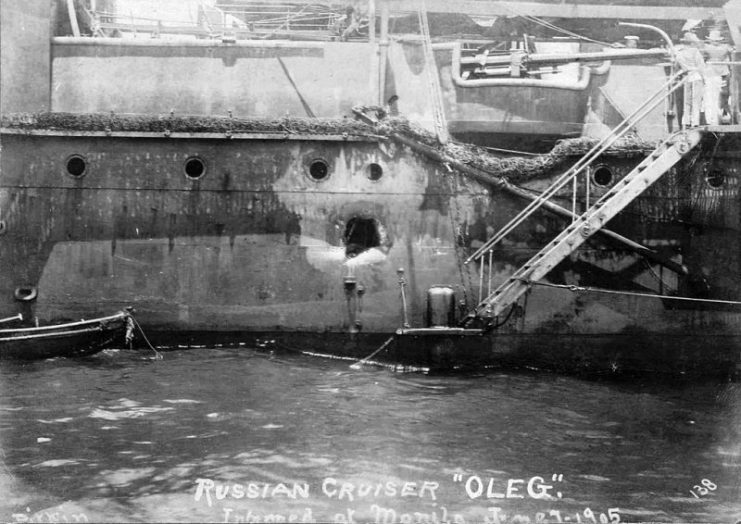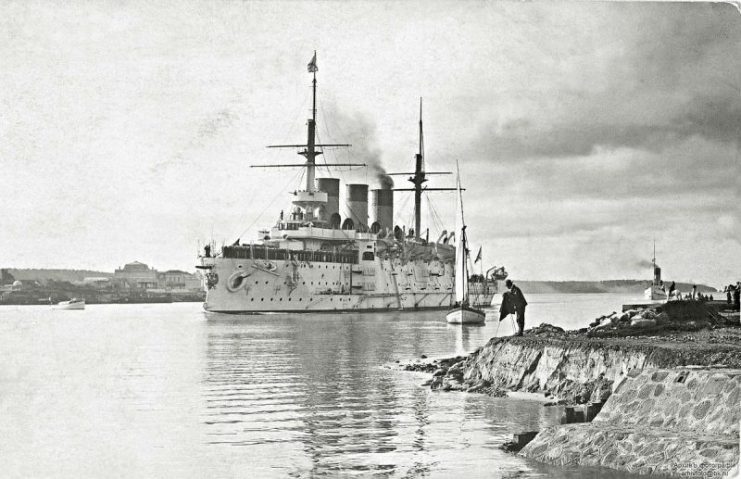One hundred and thirteen years ago, the Imperial Japanese and Russian Navies squared off in the Battle of Tsushima. The Russians were looking for a warm-water port situated on its Pacific coast, as their major Pacific oriented port at Vladivostok was useful only in the summer, but Port Arthur, which is now called Dalian, could be used all year round.
The Japanese had a problem with that.
Russia had a history of aggressive expansion in the Far East, throwing their weight around to influence developments in the region. By contrast, Japan was a virtually unknown Asian country, and they found Russia’s aggressive expansion worrisome, especially as it regarded their sphere of influence in Korea.
So Tokyo made an offer. It would concede and recognize the Russian’s control over northern China in exchange for the concession and recognition of Japan’s control over Korea. Moscow refused, demanding that Korea above the 39th parallel serve as a buffer zone.

The Japanese saw this as leading to war and launched a surprise attack on Port Arthur on February 8th, 1904. Two battleships of the Russian Far East Fleet – the Tsesarevich and the Retvizan – and a cruiser were badly damaged by Japanese torpedo boats. Recognizing their vulnerability to torpedo attacks, the Russian fleet decided to stay in port under the protection of the shore batteries, and the Japanese lay siege to the port.
The Japanese and Russian fleets traded body blows like heavyweight fighters for several months until October 1904 when Tsar Nicholas II was convinced that the Far East Fleet needed assistance. He ordered Admiral Zinovy Rozhestvensky to sail from the Baltic Sea to the Pacific to provide reinforcement.

Several months later, on May 26, 1905, Rozhestvensky’s fleet, since renamed the Second Pacific Squadron, which included thirty-eight ships, eight of which were battleships, had nearly arrived at Vladivostok. But what the Japanese lacked in quantity they more than made up for in quality, as their ships were stronger, faster and in better shape than those of the Russian imperial fleet, which was a major reason why Rozhestvensky sailed through the Tsushima Strait between the Korean peninsula and the Japanese island of Kyushu.
They would have made it through as well if it hadn’t been for a |Japanese auxiliary cruiser, who spotted the enemy and communicated the position of the enemy to the rest of the fleet using the most modern communications technology available – wireless telegraphy. This gave the Imperial Japanese Navy enough time to prepare for the arrival of their foe.
And then the battle began.

Ninety minutes into the battle, the battleship Oslyabya was the first to sink. Three hours later, the Japanese battleship Fuji blew up the Russian battleship Borodino with a direct hit, sending it to the bottom of the Pacific with all hands.
By the time night fell, the Russian fleet was on the ropes. The Japanese had taken some light damage, but the battleships Knyaz Suvorov and Imperator Aleksandr III were lost. After which, the Japanese Commander-in-Chief, Marshal-Admiral Tōgō Heihachirō released 37 destroyers and torpedo boats, launching attack after attack for three straight hours without a break.

The Navarin stopped after hitting a mine, and smelling blood in the water, the Japanese swarmed it and sunk it with four torpedos. Two armored cruisers and the battleship Sissoi Veliki were badly battered by torpedo fire, and would later need to be scuttled. In comparison, the Japanese lost only three torpedo boats.
The Russians recognized the futility of continued combat around 9:30 a.m. on May 28th, and Negogatov, who had taken over command of the Russian fleet for the wounded Rozhestvensky, offered surrender. But there was no entry in the Japanese code books for surrender, and they continued their relentless assault.
Nebogatov tried raising white flags up the flagpole to no avail as the Japanese continued firing, and then, as a last-ditch attempt to save the lives of his men, he raised the flag of the Japanese Imperial Fleet, and only then did the Japanese spare their lives.
